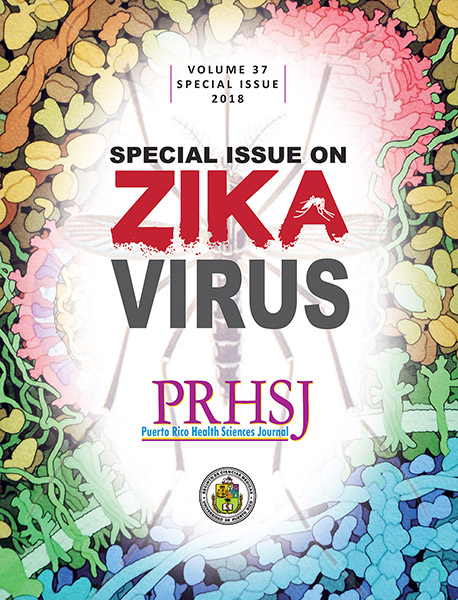Abstract
The world has encountered a new and serious epidemic which has disproportionately affected fetuses and infants. What makes the Zika virus (ZIKV) epidemic such a threat in our times, is that a whole generation can be affected by birth defects caused by a seemingly innocuous maternal infection, which in most cases go unnoticed and undiagnosed. Spreading to over 80 countries and affecting millions, it is associated with severe birth defects known as congenital Zika syndrome (CZS), which include fetal brain development abnormalities (microcephaly and brain calcifications), retinal abnormalities, and contractures and hypertonia of the extremities. Testing strategies are challenging because of the lack of symptoms and cross reactivity with other viral infections. Obstetrical complications include fetal loss and the need for an emergency cesarean delivery. The rate of CZS has been described as ranging from 5 to 6% among cohorts in the US, reaching 11% for 1st trimester exposure. Prolonged viremia during pregnancy has been documented in a few cases, reaching 89 days after the onset of symptoms in one case and 109 days after such onset in another. If the ZIKV can infect, multiply in, and persist in diverse placental cells, then movement across the placenta, the fetal brain, and the maternal peripheral blood is possible. There is a sense of urgency, and we need safe and effective vaccines and treatments, particularly for pregnant women. If we do not expand testing and develop methods for early diagnosis and treatment, thousands of infants will be exposed to a neurotropic virus that causes severe birth defects and that could also affect the lives of those who form the next generation.
Authors who publish with this journal agree to the following terms:
a. Authors retain copyright and grant the journal right of first publication with the work simultaneously licensed under a Creative Commons Attribution License that allows others to share the work with an acknowledgement of the work's authorship and initial publication in this journal.
b. Authors are able to enter into separate, additional contractual arrangements for the non-exclusive distribution of the journal's published version of the work (e.g., post it to an institutional repository or publish it in a book), with an acknowledgement of its initial publication in this journal.
c. Authors are permitted and encouraged to post their work online (e.g., in institutional repositories or on their website) prior to and during the submission process, as it can lead to productive exchanges, as well as earlier and greater citation of published work (See The Effect of Open Access).
